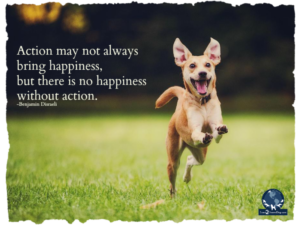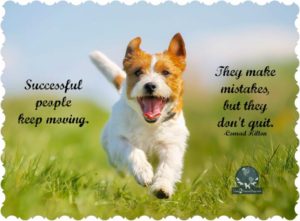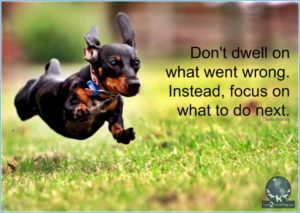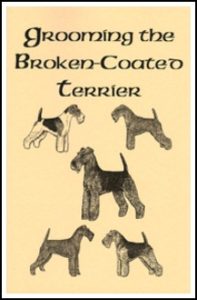Are you needing a little pick me up this week? Here are some inspirational quotes to help kick start your day.
Need a Little Inspirational Boost?
Taking a Proactive Approach to Managing Your Time
No matter how we divide up our week, the hours don’t change. We are all given 168 hours.
How is your going to be spent?
Is your week going to be smooth, controlled, productive, and rewarding? Or is your week going to be chaotic, stressed, and frustrating?The choice is actually yours. The thing about time management that you have to understand is that ultimately you are in complete control. How you manage your time is YOUR responsibility. Managing that obligation is totally up to you – no one else.
There are always ways to make more money – but you can’t make more time.
Do you feel stressed – or blessed?
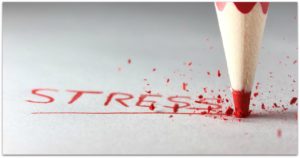 All businesses have budgets. They have quotas. There is a balance between the cost of running the business and the amount of money coming in through the doors. There has to be more coming in than going out in order to be successful. The dream of running a thriving small business does not exist if the outflow exceeds the inflow.
All businesses have budgets. They have quotas. There is a balance between the cost of running the business and the amount of money coming in through the doors. There has to be more coming in than going out in order to be successful. The dream of running a thriving small business does not exist if the outflow exceeds the inflow.
There’s a story I read years ago in First Things First by Stephen Covey. It’s a story about fitting the most into each day. I always think about it when my own life has a tendency to spin out of control. (And yes, this blog post is a little bit about self-therapy I desperately need!)
In the story, the time scenario is demonstrated with rocks and a jar. The tale starts with a glass jar and a tray of large rocks. The facilitator asked the audience how many rocks could fill up the jar. They all made guesses and the instructor put in the rocks until the jar appeared full. He then asked the audience if the jar was full. Everybody looked at the rocks in the jar and said yes. Then the instructor pulled out a container of gravel from under the table. He poured the gravel into the glass jar and gave it a shake. The small pebbles filled in the spaces between the larger rocks. He turned to his audience again and asked if the jar was full. The audience realized there was more to this game so they hesitated. The facilitator reached under the table again. This time he pulled out a bag of sand. He sprinkled the sand on top of the rocks and the gravel. He gave the glass jar a bit of a shake. The sand settled in between the cracks. He asked his audience again if the jar was full. This time they said no. And sure enough out from under the table came a pitcher of water. He poured in the water until it reached the top of the jar. Now the jar was full.
So what is the moral of the story? Some people think it’s about being able to fit more into your day if you really work at it. That’s not really the lesson. His point was that if the big rocks don’t get put in first, the rest wouldn’t begin to fit inside the glass container.
Your life is the same. Your work is the same. You need to fill in the big pieces first before the smaller pieces can be added. By being deliberate with your time, you can get more out of your day – out of your week – when you place the pieces in the right order.
So how does the scenario play out in a grooming business? Like many service-based businesses, time is money. How do you make the most of it? Do you struggle to get four or five dogs done each day? Are you frustrated because you can’t get eight dogs done in a day without making yourself miserable?
What are your big rocks and how many of them can you fit? How can you fill up your personal jar the most efficiently?
Everything starts with an appointment book or digital schedule. If time is money, and you can’t create more time, you want to make the most efficient use of the time available.
Look at the players you have on your team. What are their strengths? What are their weaknesses? Do they have specialties? Which team members have high-level skills?It doesn’t matter if you are solo flyer or part of a larger team. Isolate and analyze all the strengths and weaknesses. Successful teams focus on strengths. If you have a stylist who is highly proficient at breed profile trimming and high-level skills, it is a waste of time to have that person doing elementary tasks that could easily be delegated to others.
By the same token, if you are a solo stylist, you can still delegate. Do you really need to wear all the hats? Can you delegate salon cleaning? Hire a receptionist or a bookkeeper? My guess is your strength is grooming. Don’t waste time on other tasks that you can delegate.
If you’re trying to grow your business and your team, think about this. People can only handle larger stones if they increase their knowledge base. Helping your team grow by enhancing  their skills is always a smart move.
their skills is always a smart move.
The Appointment Book
This is a crucial part of putting in the big rocks. The big rocks would be the full-service grooms. Bichons, Shih Tzus, Schnauzers – pets that require haircuts.
Next in line would be the bath and brush style pets. These will be what I would consider the gravel-sized grooms: Golden Retrievers, Labs, Shelties, etc.
After that you’re looking for the sand. These would be the smaller, very simple dogs to do. They may be smaller weekly or biweekly bath and brush dogs or simply short-coated small dogs. Many stylists affectionately refer to them as “Splash and Dashes.”
 The water would be the quick things that you could do to increase your revenue. These would be add-on services like:
The water would be the quick things that you could do to increase your revenue. These would be add-on services like:
- Walk in nail trims
- Teeth brushing
- Nail filing
- Coat and skin conditioning treatments
There is a long list of extra services that could be your water.
Start by figuring out how many of the larger rocks (the full-service grooms) need to go under each stylist per day. Once that is been established, then schedule with less taxing jobs such as the bath and brush dogs. These dogs will be the gravel, filling in between the full-service grooms. Many people color code these types of jobs in the appointment book to give a strong visual of how the day is shaping up. Once the rock and gravel is scheduled, then you can fill in the gaps with the sand – those appointments that are super simple to do. And then to really fill up the day, add in the water – the add-on services.
Grouping Tasks Together
 To use your time efficiently, group similar tasks together whenever possible. Batching tasks together will always enhance your productivity. Think about it like an assembly line. Even if you just have a couple dogs scheduled at one time, try to work them in an assembly line fashion.
To use your time efficiently, group similar tasks together whenever possible. Batching tasks together will always enhance your productivity. Think about it like an assembly line. Even if you just have a couple dogs scheduled at one time, try to work them in an assembly line fashion.
Have the clients drop all the dogs off at approximately the same time. Prep them all at the same time. Get them all into the tub at about the same time. Condense all the drying into a single span of time. Finish them one right after the other. Finally, release them all at the same time.
Why does this work? It minimizes the number of distractions with clients coming and going. It allows you to be much more focused and efficient with your time at the grooming table.
Slow Down
Sometimes the best way to increase your time is to actually slow down. Be deliberate, and methodical. Plan out what you are going to do. Stop and think. Breathe.
Use your appointment book. Create systems you can follow consistently. Ultimately those systems will be your shortcuts to efficiency – and your sanity.
 All of us are only given 168 hours a week. The choice is yours how you are going to use it and live your life at work and at home.
All of us are only given 168 hours a week. The choice is yours how you are going to use it and live your life at work and at home.
Are you going to feel stressed?
Or are you going to feel blessed?
Use your time wisely.
What techniques do you use to be proactive with your schedule? Jump over to the Learn2GroomDogs.com Facebook page and tell us about it!
Happy trimming!
~ Melissa
Can You Teach Yourself to Strip?
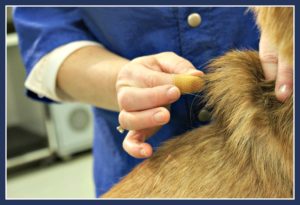 I was at GroomExpo just a few weeks ago and met many wonderful pet professionals. One of them was Connie Carter of Gorgeous Growlers Grooming in Florida. She had attended several of my lectures and at the end of the show she stopped to thank me as we passed in the hall. We chatted a bit and as we parted ways, I reminded her that I was happy to help with any questions that she wanted to email to me. I love complex questions that can lead to blog topic ideas! Well, guess what? Connie didn’t waste any time. Within a week, I got my first question from her – and it’s a good one.
I was at GroomExpo just a few weeks ago and met many wonderful pet professionals. One of them was Connie Carter of Gorgeous Growlers Grooming in Florida. She had attended several of my lectures and at the end of the show she stopped to thank me as we passed in the hall. We chatted a bit and as we parted ways, I reminded her that I was happy to help with any questions that she wanted to email to me. I love complex questions that can lead to blog topic ideas! Well, guess what? Connie didn’t waste any time. Within a week, I got my first question from her – and it’s a good one.
“Can I learn how to hand-strip online? How long does it take to learn how? I have a new client whose Westie puppy is being delivered at the end of October. I do have some experience helping but I’ve never done a full hand stripping job of my own.”
The short answer to your question is: “Yes.” You can teach yourself to hand-strip if you have the right information. The trick is getting the right information at the right time – AND you need to have the right dog with the right coat to practice on!
 Luckily, hand-stripping is pretty forgiving. Granted, some breeds are easier to learn on than others.
Luckily, hand-stripping is pretty forgiving. Granted, some breeds are easier to learn on than others.
There are two types of coats that need routine stripping to maintain the correct texture and color:
1. Sporting Dogs (also known as Gun Dogs)
2. Harsh-coated pets (primarily in the Terrier and Working groups)
I still remember the coat of my first hand-stripped show West Highland White Terrier. It felt like a suit of armor. The dogs’ jacket was so hard, nothing was going to penetrate that coat. At that point in my career, I had only clipped Westies. They were smooth, soft, and cuddly. I had no idea what hand-stripping was – let alone that hand-stripping was the correct way to prepare the coat.
I rank the difficulty of hand-stripping on a scale from 1 to 3. The coat is factored in, as well as the temperament of the pet.
(Because Connie based her question on a West Highland White Terrier, I will focus more on the harsh-coated coat types. I would say Westies fall between a 2 and a 3 on the following difficulty scale.)
RATING SCALE
ONE
Super simple. The hair pulls out with very little effort.
TWO
Requires a bit more thought and effort. The hair needs to be worked a little bit more. You will need a wider variety of stripping tools to get the job done. You also need to think about the new layer of coat coming in. This fresh layer of harsh coat will need to be constantly rotated. The rotation normally takes place at consistent intervals so the dog is never stripped down naked.
THREE
In a word – challenging. Different parts of the coat on the dog’s body grow at different rates. Hand stripping them in the right sequence is critical for correct coat regrowth. Some sections are easy to pull down, while others are very difficult. Getting the dog to look conformation show ready is an art. It requires education, knowledge, training, skill, and practice. Lots and lots of practice.
Many accomplished stylists do a combination of half stripping, half clipping on their pet clients. This technique mimics the look and texture of a properly pulled coat. It’s typically much quicker to do. It’s easier on the pet – and kinder to the client’s pocketbook. It will also leave a bit a coat on the dog, making it more attractive to a pet owner.
When you are first starting to learn the technique of hand-stripping, it is advantageous to start with what I would consider a #1 rated dog. Start with something very easy. Preferably, the coat is blown and literally falling out. This type of coat requires very few tools to pull it out – maybe just your fingers. Which breeds with these be? Here are a few:
- Many of the Russell-type breeds
- Some Cairn Terriers
- Border Terriers
- Some Irish Terriers
- PBGVs
- Irish Wolfhounds
- Otter Hounds
- Podengos
- Scottish Deerhounds
- German Wirehaired Pointers
- Wirehaired Vizslas
- Spinone Italianos
- many mixed breeds including wire coated Doodles
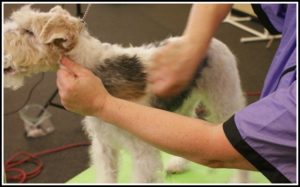 As you increase your skill level, you’ll be ready to tackle more challenging coats. I would consider these dogs a #2 in their level of difficulty. Keep in mind many dogs could waver between levels.
As you increase your skill level, you’ll be ready to tackle more challenging coats. I would consider these dogs a #2 in their level of difficulty. Keep in mind many dogs could waver between levels.
- Wire coated Dachshunds
- Australian Terriers
- Dandie Dinmont Terriers
- Glenn of Imaals
- Norfolk Terriers
- Norwich Terriers
- Brussels Griffons
- Bouvier des Flandres’
Once you have mastered the skills required to hand-strip #1 and #2 rated coat types, then you’re ready to start working on the most challenging group. Remember to keep in mind that this also depends on the dog.
- all of the Schnauzers
- Airedales
- Lakeland Terriers
- Scottish Terriers
- Welsh Terriers
- Westies
- Wire Fox Terriers
- Affenpinschers
All of the harsh-coated breeds will vary slightly with their degree of difficulty. A number of factors affect where they ultimately fall in this rating system. Genetics need to be considered. Hormones, as well as whether the dog is altered or intact will affect a coat. The length of time between grooming sessions will dictate how readily their coats pull. The climate and the season will also play a role in how easily the coat is removed.
Where do you turn when you want to learn the technique of hand-stripping? You have options – and many of them can be self-directed.
Observation
Start with observing high-quality dogs. Seeing a dog in the flesh is the best way. Go to dog shows. Study the dogs in the grooming area as well as in the ring. Look at magazines featuring top winning dogs. Do an online search for images of AKC or UKC Champions. Go to top breeder websites. Watch dog shows online or on TV.
You need to firmly etch a mental picture of what a high-quality hand-stripped dog should look like. It is also important to actually touch the coat to get an idea of what it feels like. Achieving any type of quality without this knowledge will be impossible.
Breed specific books will give you details. There is one particular booklet I really like. It does an excellent job of explaining the techniques of hand-stripping. It’s older and though it may not be very sophisticated, the material is timeless This book caters to what I would consider the more challenging breeds: broken-coated Terriers that have their coats “staged” for proper regrowth. However, the techniques outlined can be applied to many of the easier breeds as well. Click here to see more details about this book.
Videos
Most professional pet groomers are visual learners. Videos are a great way to go – as long as the content is accurate.
In this day and age, you have to be very careful. Trust me, I just did some quick research to see what was currently available on YouTube concerning hand-stripping. There certainly was a wealth of information but much of it was scary. Sure, there is a few nuggets of excellent content but you have to know what you’re looking for and have enough knowledge to know whether you’re looking at quality techniques or not. You’re better off looking for top stylists that are producing videos on the topic. You can find them both in DVDs as well as online streaming. In the Learn2GroomDogs.com library there is a wide assortment of streaming video lessons. Here’s a hint. If you search the site using the word “strip” in the search bar, you will pull up ALL the hand-stripping lessons. From there, you can isolate what appeals to you.
All of the training partners do a great job. Jennifer Hecker does an excellent job explaining the basics of dealing with a harsh-coated Terrier. Lisa Leady, Suesan Watson, and Amy Triezenberg all focus on beginner and intermediate hand-stripping. Most of their lessons deal with typical pet dogs we see in our grooming salons. Michelle Evans focuses on more advanced techniques, as well as how to apply different stripping techniques. There are many other training partners sprinkled through the hand-stripping section who also have exceptional lessons.
When you are looking for DVDs or videos to watch, make sure you verify the qualifications of the demonstrator. There are many high-quality lessons available but others can be a waste of time.
Clinics and Seminars
One of the best ways to learn hand-stripping techniques is to attend a clinic or seminar. Advanced hand-stripping is definitely an art. It takes plenty of knowledge and practice. Learning from a master is a huge shortcut when it comes to becoming proficient. How do you find out about clinics and seminars? Many certification organizations host workshops. Make sure you are on their mailing lists. Join a couple professional groups on Facebook such as Pro Groomer Network. Your state may have an organized groomers Facebook page. Grooming schools in your area may also host events.
Mentor
Finding a mentor for a particular technique or breed will certainly fast track you to your goals. The mentor may come from the conformation show ring, the competitive pet styling arena, or they may have years of experience grooming pets. As your skills grow, your mentors might grow and change. And if you can’t find a mentor, find a study partner who is looking to expand their skills. Somebody that you can work with you as a team to find the best information. Meet up after hours to work on your skills together with practice pets.
Whatever route you choose, you certainly can teach yourself. Finding help in the form of books, videos, seminars, clinics, or an actual mentor will certainly help. The more you are able to combine those learning resources, the shorter your learning curve.
The art of hand-stripping is becoming more widely accepted in the pet grooming arena. When a new harsh-coated Terrier walks through your door, think twice about clipping the coat off. Is that really the best option? Clipper cutting a harsh-coated Terrier typically destroys the correct texture. Many clients opt for that route simply to reduce cost and time factors associated with hand stripping. For those clients that have educated themselves about their breeds, hand stripping may be their preference – as long as they can find a professional pet stylist that can execute the technique correctly.
Are you that person?
Do you do any hand-stripping? Why or why not? Jump over to the Learn2GroomDogs Facebook page and tell us about it!
Happy trimming!
~ Melissa
Thinning Shears are the Pet Stylist’s Eraser
Are you thinking about upgrading any of your pet grooming tools? For many dog groomers, The Groom Expo in Hershey, PA that is coming up later this month is a perfect time to see and test new items for your tool kit. If you are saving your tip money to buy new thinning shears, this blog is for you!
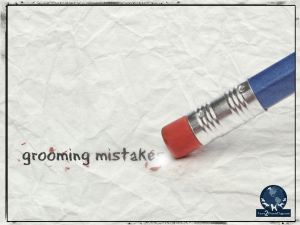 Thinning shears (or blending shears) are the best-kept secrets in the grooming world. Used properly, they can make mistakes much less noticeable. For a new stylist, this is one of the first shears I always recommend upgrading in your toolbox.
Thinning shears (or blending shears) are the best-kept secrets in the grooming world. Used properly, they can make mistakes much less noticeable. For a new stylist, this is one of the first shears I always recommend upgrading in your toolbox.
It doesn’t matter how long you’ve been grooming or how talented you are as a pet stylist – sometimes you just need a little help. An “oops” can occur at any time. Mistakes happen.
Maybe there is a spot on the coat that you just can’t get smooth. Maybe there is tracking in the coat from the clippers or guard comb. You may have left scissor marks in the coat – or a hole in the coat you accidentally made with clippers or scissors. You might even be working with a dog that will not hold still long enough to work safely with clippers or scissors – leaving the coat rough and jagged.
Thinning shears can be your savior. They erase rough spots. They blend out jagged edges. They smooth out transition areas. They fix mistakes.
The difference between a good stylist and a great stylist can be determined by how much value they place on their blending shears.
 Stylists that understand the value of this type of shear will invest in multiple pairs. Just like straight edge shears, there are wide varieties from which to choose. Some are for more general use while others have more specific usage. The key is to know how you want to use the shear. Do you need it for light wispy coats? Drop coats? Terrier styling? Working around the head or eye area or dealing with large surface areas? There is a blender to fit every single one of these needs.
Stylists that understand the value of this type of shear will invest in multiple pairs. Just like straight edge shears, there are wide varieties from which to choose. Some are for more general use while others have more specific usage. The key is to know how you want to use the shear. Do you need it for light wispy coats? Drop coats? Terrier styling? Working around the head or eye area or dealing with large surface areas? There is a blender to fit every single one of these needs.
I always suggest you personally try out thinning shears before you purchase them. Just like Colin Taylor says, shears are like shoes. You need to find the ones that fit you! They have to fit properly as well as cut smoothly and run effortlessly in your hands.
So how do you narrow down your choices? Ask. Find out what other groomers and stylists are using. Determine which thinning shears they rely on every day in their salons. Believe me, they have opinions! There are lots of fabulous thinning shears out there – but there’s also a lot of junk.
Most high quality blending shears will have an average cost of $150 – $350. Of course, you can spend more if you like. Your equipment is an investment in your career. You may not need the Rolls-Royce when you first start out – but you do need something that is reliable and dependable. Luckily, there are many styles and varieties from which to choose.
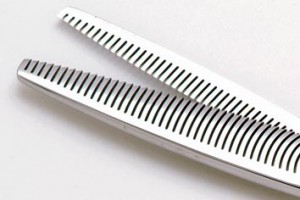 The difference between a good stylist and a great stylist is that they know how to fix mistakes. Every one of us makes them. Having a nice collection of thinning and blending shears will be the erasers you need when that “oops!” happens.
The difference between a good stylist and a great stylist is that they know how to fix mistakes. Every one of us makes them. Having a nice collection of thinning and blending shears will be the erasers you need when that “oops!” happens.
What are your favorite shears? What do you look forward to shopping for when you go to Hershey? Jump over to the Learn2GroomDogs Facebook page and tell us about it!
Happy trimming!
~ Melissa
Why Should I Schedule Holiday Appointments in September?
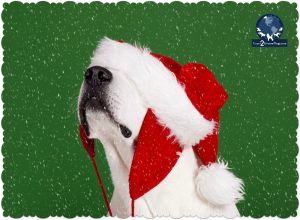 It’s hard to think about scheduling for the holidays with apples still growing bright on the trees and pumpkins still turning orange in the fields. Warm weather makes it hard to start thinking about holiday plans. What if I told you that this is the perfect time to avoid holiday stress?
It’s hard to think about scheduling for the holidays with apples still growing bright on the trees and pumpkins still turning orange in the fields. Warm weather makes it hard to start thinking about holiday plans. What if I told you that this is the perfect time to avoid holiday stress?
The secret to avoiding holiday madness is to put your festive season pre-booking plans into gear before the chill hits the air. Are you surprised? It’s true! Here is an added perk to pre-booking holiday appointments. ‘Tis the season to guarantee the typically quiet months of January and February are lively and robust. This is the perfect time to ensure you have a holly, jolly, and profitable grooming season.
When you count it out, we are not that far out from many prime holidays. In just six short weeks it will be Halloween. In 10 weeks we celebrate Thanksgiving in the United States. In about 15 weeks we will celebrate Christmas and Hanukkah. All of these holidays revolve around friends and family.
 One of the biggest ways to eliminate being frazzled by all the holiday pressures is to get organized, now. The last thing your clients want to worry about is having their four-legged fur baby looking unkempt and bedraggled as friends and family enter their homes to celebrate the season.
One of the biggest ways to eliminate being frazzled by all the holiday pressures is to get organized, now. The last thing your clients want to worry about is having their four-legged fur baby looking unkempt and bedraggled as friends and family enter their homes to celebrate the season.
Years ago we discovered that pre-booking was a great way to get control of our salon schedule. It offered a great benefit to our customers, as well. We even found a few hidden bonuses. One of those bonuses was shortening the time frame between appointments on our five and six-week clients. Our customers often opted to shave off a week or two from their regular schedule just to make sure their dog was looking fresh and festive. By doing so, the added revenue dropped directly to our bottom line. Another bonus was the generosity of tips around the holiday season. The third bonus was our ability to pre-book into the typically slower January and February appointment time frames here in Michigan. When done correctly, our January and February can be some of our more profitable months.
So how do you kick this off?
Start by going through your client list. Identify your premiere clients. You know who they are – the clients that book regular appointments every one, two, three, four, five, and six weeks. You will start pre-booking appointments based on the frequency your clients typically come into the salon.
 Once you have them identified, it’s time to pick up the phone and get them scheduled. I consider it a courtesy call to our most important and regular clients.
Once you have them identified, it’s time to pick up the phone and get them scheduled. I consider it a courtesy call to our most important and regular clients.
Your weekly and bi-weekly clients should have automatic standing appointments throughout the entire year. Those clients are your most valued premier customers. Confirm all of their appointments. They should be dropped into the schedule first, getting premium appointment choices. Once all your one and two-week clients are booked, move to your three-week clients. If they do not already have pre-scheduled appointments through the holiday season, pick up the phone to get them scheduled. Continue to move down the list to the four-week clients. Finish up with your five- and six-week clients.
By the time you are done, you will have very few appointments left. Why? Because you’ve done such a good job taking care of your most valuable clients. If you do have any appointments left, you can be selective about what you take. You will have the control and confidence to know what can be done or what needs to go on to a cancellation list or when you simply need to say, “I’m sorry, but we are full.”
Once the schedule is set – stick to your guns. Sure, the holiday season can be extremely profitable for grooming establishments, but do you really need to push yourself beyond your limits?
No. Not if you value your mental and physical health.
 Once you get into the final countdown in November and December, looking forward six weeks will be January and February. Before those clients leave, they should have their January and February appointments pre-booked. If you struggle to get clients to pre-book during the colder months, think about incentives to help encourage pre-booking. Maybe it’s a discount off their next grooming. Maybe it’s a free add-on, upsell, or spa treatment. Get creative – but make sure you’re ready to offer the incentive at checkout to get those deep winter appointments booked.
Once you get into the final countdown in November and December, looking forward six weeks will be January and February. Before those clients leave, they should have their January and February appointments pre-booked. If you struggle to get clients to pre-book during the colder months, think about incentives to help encourage pre-booking. Maybe it’s a discount off their next grooming. Maybe it’s a free add-on, upsell, or spa treatment. Get creative – but make sure you’re ready to offer the incentive at checkout to get those deep winter appointments booked.
Don’t forget, the holiday season is about friends and family. You have a right to enjoy them, too. How can you fully enjoy family time when you’re totally drained? Some of you may miss festivities altogether! I can’t tell you how many Christmas Eve’s and even Christmas days I totally missed because I was simply exhausted. Most successful groomers have to learn this lesson the hard way – including myself! Don’t believe me? Click here to check out my video on Learn2GroomDogs.com!
When you have a pre-booking priority system, you are in control. You’ll be able to recapture your holiday spirit and sanity – and so will your team!
Remember, as the holidays draw closer, the dogs get easier. Typically, these are the one- to three-week regularly scheduled pets. Simple spruce-ups are usually all that’s needed to make them look amazing for their families.
This system works best when you start pre-booking in September. Don’t wait. You’ll thank me later when you have time to enjoy loved ones and some holiday cheer.
What steps do YOU take? Jump over to the Learn2GroomDogs Facebook page and tell us about it!
Happy trimming!
~ Melissa
Are You a Dog Grooming Success?
 Dog groomers love to do a good job. We like the way it feels to excel and to please other people. For some, this is how they measure success. For others, this is a starting point. Do you want to know the steps and work it takes to go from good to great?
Dog groomers love to do a good job. We like the way it feels to excel and to please other people. For some, this is how they measure success. For others, this is a starting point. Do you want to know the steps and work it takes to go from good to great?
What are your goals? Do you admire today’s top competitive pet stylists? Maybe you have your sights on certification. Do you have a dream of someday becoming a certified master groomer or pet stylist? Maybe you hope to become a member of GroomTeam USA or represent your country in world team competition?
Maybe your dog grooming aspirations have nothing to do with competitive styling. Maybe your goal is winning the trust and respect of pet owners, turning them into regular clients.
They’re all worthy goals – and guess what? It’s not as hard as you think. There is no complicated recipe. But there is a secret.
Focus on the fundamentals.
Success is all about the fundamentals. The fundamentals are the little things. The ordinary things. And often, they are the tedious things. But to be the best you must master them. You must become a master of those ordinary, everyday tasks. With every act of greatness, whether in sports, business, the arts, or in pet grooming, the best of the best achieve extraordinary feats by doing ordinary things with amazing consistency, commitment, and focus.
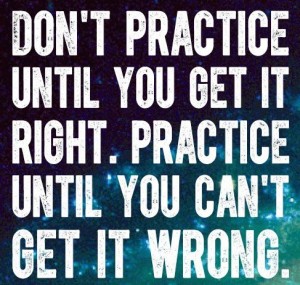 What are the fundamentals in dog grooming?
What are the fundamentals in dog grooming?
It means perfecting the core skills: bathing, drying, brushing, fluffing, and dematting. It’s also clipping, scissoring, as well as understanding basic structure and anatomy. It means having solid and safe handling skills.
As a professional dog groomer and stylist, we get to practice these skills all the time. In fact, many of us practice them every single day. World-class pet stylists don’t master their craft by working every day on perfect dogs with fabulous coats in perfect condition. For many of them, the only time they work on a “perfect dog” is in the ring – and under the pressure of competition. Even then, there is no such thing as a perfect dog. Every dog has its flaws – even the perfect ones.
Top stylists know it takes years of practice with everyday pets to master the fundamentals. Winning doesn’t just happen on the day of the competition. Winning is a result of dedication and hard work. The trophy is a product of training, study, and sacrifice. You cannot earn a high grade in certification testing on testing day, alone. Winning or earning high grades on your practical skills tests starts in every bathtub and on every grooming table, every day. There is no such thing as an overnight success. Typically, it takes years of uncountable numbers of hours of dedication to the craft.
Practice, in itself, is not enough. In order to truly succeed you need to follow this rule: Perfect Practice Makes Perfect. If you are not practicing dog grooming fundamentals correctly, you’re wasting your time. Clients will not return if your work is sub-par. Awards will not be given. High test scores will be out of reach.
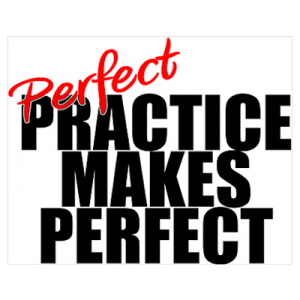 With so many variables with dog grooming, where do you start? What coaching or training technique should you trust? How do you learn the RIGHT skills?
With so many variables with dog grooming, where do you start? What coaching or training technique should you trust? How do you learn the RIGHT skills?
Start at the ground floor and learn from the masters. The information is out there. You will find it in:
- magazines
- books
- clinics
- workshops
- seminars
- schools
- trade shows
- conformation dog shows
- obedience classes
- grooming competitions
- videos
- blogs
Research online. Talk to vendors and manufacturers. Work with a mentor, a coach, a consultant. Look. Listen. Learn. But don’t blindly trust everything you find – check references whenever possible. Today, there is a lot of information out there – unfortunately not all of it is good information! Talk to the experts to make sure the material you are learning is correct and safe.
As you learn, take it one small step at a time. Dissect every step. Break it down. For every technique there are micro steps to learn to perfect any skill. Study those micro steps.
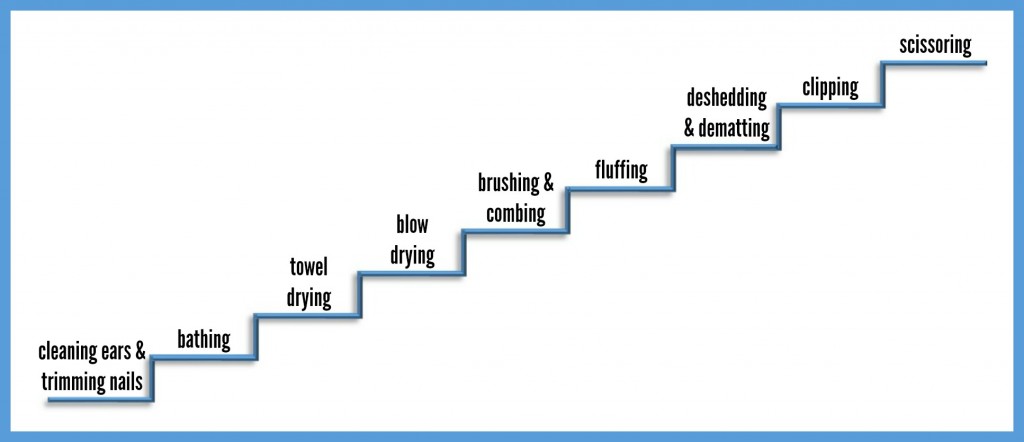 Start at the very beginning just like with a long flight of stairs. You start at the bottom, taking one step at a time. Mastering dog grooming fundamentals is a lot like a staircase. Jumping ahead or skipping steps will not get you ahead any faster. In fact, missing steps is way more detrimental to a career than staying on course dealing with each step moving up the flight of stairs.
Start at the very beginning just like with a long flight of stairs. You start at the bottom, taking one step at a time. Mastering dog grooming fundamentals is a lot like a staircase. Jumping ahead or skipping steps will not get you ahead any faster. In fact, missing steps is way more detrimental to a career than staying on course dealing with each step moving up the flight of stairs.
With every step along the way, you are creating a knowledge base. It will continue to grow with your career. It is paramount for any pet professional to have fabulous pet handling skills to build trust with our furry clients while keeping them safe. Another area that is critical to any successful pet groomer or stylist is learning the finer details of structure and anatomy.
The key is to focus on improving each day, taking the necessary steps. If you incrementally improve each day, each week, each month, each quarter – by the end of the year you will see remarkable results and growth. Over time, by committing to this process, the best develop their skills and enhance their performance as they strive for excellence and achieving perfect execution.
If you want to be at the very top of your game, to become one of the best professional pet groomers/stylists in your town, in your state, in your country, you need to practice perfect fundamentals. Every. Single. Day. You don’t need to have perfect pets to make this happen. Grooming everyday pets offers an abundant opportunity to practice the fundamentals.
Your success doesn’t necessarily mean winning the award or scoring a high grade. Sometimes success means having a full appointment book with happy customers. That’s what truly makes a successful grooming business.
What steps do YOU take? Jump over to the Learn2GroomDogs Facebook page and tell us about it!
Happy trimming!
~ Melissa
How to be an Indispensable Groomer’s Assistant
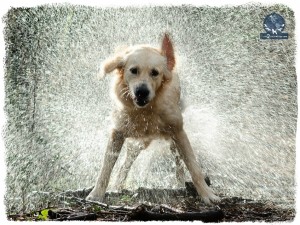 It always shocks me when a competitor or a workshop participant presents me with a DIRTY DOG for evaluation. A dirty dog?! No joke – it happens all the time.
It always shocks me when a competitor or a workshop participant presents me with a DIRTY DOG for evaluation. A dirty dog?! No joke – it happens all the time.
Nails are not trimmed correctly.Coats are not dried properly or completely.
…or worse yet, there are still mats and tangles left in the coat.
It’s not good grooming but I see all the time. Not only in the ring or at hands-on events, but in salons, too.
To me, bathing and drying are the most critical parts of any groom. One bather can make or break your entire grooming department.
Here are 7 skills I look for in an indispensable groomers’ assistant (AKA the bather!) All 7 of these skills must be MASTERED if you want to be highly valued in your grooming salon, if you want to move ahead in your career, or before you can gather loads of glowing clients.
![]() Be able to identify popular breeds
Be able to identify popular breeds
Anybody working professionally with pets needs to be able to identify the top 15 or 20 breeds that regularly come into your salon. It’s the fastest way for groomers to be able to communicate to one another.
![]() Be able to handle pets safely and compassionately
Be able to handle pets safely and compassionately
How many times have you heard others (or maybe even yourself) say, “This dog is driving me nuts!” Impatient treatment of a pet is never acceptable. If you lose control, you can bet that you won’t have clients for long. Being able to understand canine body language is job requirement #1. If you are going to win the pet’s trust and cooperation, you must be able to speak its language. It will keep you and the pet safe. It will also make the entire experience much more enjoyable for all parties.
![]() Understand the many different coat types found on individual pets
Understand the many different coat types found on individual pets
Each coat type has special needs that need to be addressed in the bathing and drying process to get the best results. A Beagle has different bathing and drying needs than a Standard Poodle. The same holds true with a coat on a Golden Retriever or an Airedale Terrier. A talented bather will instantly be able to identify dogs that possess simple coats or dogs that are going to be time-consuming and a challenge.
![]() Bathe the dogs until their coats squeak
Bathe the dogs until their coats squeak
If they don’t squeak, they are not clean.
Period.
This is the foundation of every fabulous grooming job. I cannot stress its importance enough. There are many products on the market to help achieve superior results in only one or two baths. Even if you use the best shampoos on the market, the dog will not get squeaky clean unless they are rinsed thoroughly. Rinse until the water runs clear and you hear the “squeak” when you push the water through the coat. And not just the easy to see or reach parts. Get soap and water to the undercarriage, under the ears, and the special parts. If the whole dog isn’t clean – it’s still dirty. Nothing wastes time or money more than having to re-bathe a dog because you didn’t do the job right the first time. There’s an old saying: if you don’t have time to do it right, when will you have time to do it over? Get it right the first time.
Most of the time, this will mean utilizing a form of active drying. There are several drying methods and combinations to choose from, based on the coat type, trim, and the pets’ tolerance. Incorrect techniques or careless attention to drying will waste more time than almost anything else in the grooming process. In most cases, high velocity and stretch (or fluff) drying techniques will need to be used to get superior results. Oh, and the pet needs to be bone dry too!
![]() Learn efficient and SAFE brushing techniques
Learn efficient and SAFE brushing techniques
Systematic brushing is the only way to effectively work through a coat and get right down to the skin. Selecting the correct tool for the coat type will be important. Knowing how to hold the tool along and how much pressure to exert is also important. Not enough pressure and you will not be efficient. Too much pressure and you’re going to make the pet uncomfortable and could cause injury. The key is to work methodically and gently over the entire dog – right down to the skin until a wide tooth comb can easily be pulled through the fur.
Trimming nails and cleaning ears is just an automatic process when it comes to grooming pets. If it is not done – or not done well – it’s considered sloppy. Clients don’t want to spend their hard-earned money on sloppy work. Stylists executing haircuts should not have to go back and double-check this type of preliminary pre-work. Some salons routinely check and/or express anal glands. Whatever your salon option is, you should follow their guidelines.
Being a bather – or being a groomers’ assistant – can be extremely rewarding. However, it does carry a lot of responsibility. Many of these skills are considered the foundation of all grooming.
Remember: every owner faces a choice when it comes to grooming. They can come to you, do the job themselves, not have the pet groomed all… or go down the road to someone else. Make sure they make the right choice by sticking with you.
What do you look for in a great groomer assistant? Jump over to the Learn2GroomDogs Facebook page and tell us about it!
Happy Trimming!
~ Melissa
Salvage Work
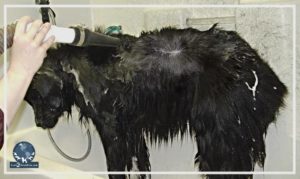 Many of us are seeing a lot of pets that are ready for a great makeover. With that in mind, I thought it was the perfect time to revisit my blog on salvage work.
Many of us are seeing a lot of pets that are ready for a great makeover. With that in mind, I thought it was the perfect time to revisit my blog on salvage work.
As many of you know, I’m a big dog person. Working on these large furry dogs that have a huge shedding problem is one of my favorite things to do in a grooming salon. I know, I know, call me crazy – but I just love seeing the transformation in this type of job. Over the years I’ve gotten really quick with the process and rarely cringe, no matter what the size of the dog, nor the condition – I see it as a fun challenge!
My #1 rule is: Never work on a dirty dog. If water can penetrate the coat, let your products do the job.
Working on a dirty dog is not only unpleasant, but it also takes longer to do. Plus, there will be a lot of coat damage and breakage. A dirty coat is dry and brittle. The dirt and dander trapped within the fur makes it more difficult to brush out. Working on a clean coat will be easier for both you and the pet – and much more pleasant.
If there are large chunks that water cannot penetrate, go ahead and break up the tangle using the tool that is safe for the pet. Don’t worry about removing it completely, just break it apart so the water and shampoo can do its job.
Prepare your bathing area. If the dog is exceptionally dirty, use a shampoo especially designed for dirty dogs. Using a follow-up treatment of a skin and coat conditioner after bathing twice (or maybe three times in some areas) will assist with the brush out and dead coat removal during the drying process. Make sure you have all the tools you’ll need to aid in getting the dog clean like rubber curries or scrub brushes. And make sure you have plenty of towels handy. To see my video lesson on salvage work at Learn2GroomDogs.com, click here.
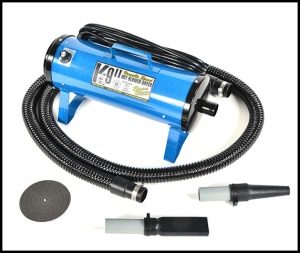 My favorite trick when working with this type of job is to bring my high velocity dryer right into the bathing area (bring your eye and ear protection, too!). With the dog fully lathered, blow the shampoo right off the pets while they are tethered in the tub. The slippery soap will allow the dirt, loose coat, and tangles slide out, being trapped in the shampoo and sticking to the back wall of the tub, minimizing the mess. Not all the shedding coat or mats will be removed but a lot will, making your job easier once you transfer to the drying table. Once you have blown out the pet, follow up with the rinsing process. Repeat this process as many times as necessary to get the dog “squeaky clean.”Once the pet is clean and thoroughly rinsed, apply a skin and coat conditioning treatment before heading to the drying table. Read your directions: some conditioning treatments need to be rinsed out while others do not. Your high velocity dryer and a heavy slicker brush will be your best friends during the drying process.
My favorite trick when working with this type of job is to bring my high velocity dryer right into the bathing area (bring your eye and ear protection, too!). With the dog fully lathered, blow the shampoo right off the pets while they are tethered in the tub. The slippery soap will allow the dirt, loose coat, and tangles slide out, being trapped in the shampoo and sticking to the back wall of the tub, minimizing the mess. Not all the shedding coat or mats will be removed but a lot will, making your job easier once you transfer to the drying table. Once you have blown out the pet, follow up with the rinsing process. Repeat this process as many times as necessary to get the dog “squeaky clean.”Once the pet is clean and thoroughly rinsed, apply a skin and coat conditioning treatment before heading to the drying table. Read your directions: some conditioning treatments need to be rinsed out while others do not. Your high velocity dryer and a heavy slicker brush will be your best friends during the drying process.
Rule # 2: Be Methodical and Thorough
First, blow out as much moisture and loose coat at possible with the air flow. Use the highest power setting the pet is comfortable with, and a condenser cone. Once you have pushed as much water and loose fur from the pet, remove the condenser cone, and bring the air flow close to the pet’s skin. “Boost” any loose coat out of the dog by lightly patting the area where the air is striking the skin with a slicker brush.
Continue to work over the dog in a methodical manner until your brush glides through the coat easily and no more loose coat is trapped in the brush.
Rule #3 – ENJOY!
When the dog is complete, it should smell clean and fresh. The coat should be glossy and float freely as the dog moves. There should be an irresistible desire to reach down and bury your hands in a freshly groomed pet.
What are your best methods? Jump over to the Learn2GroomDogs Facebook page and tell us about it!
Happy Trimming!
~ Melissa
Production Bathing & Drying
 Pet bathing and drying seems to be a huge time challenge for many professionals. Many of you are all overflowing with pets to bathe during the summer season. I thought this would be a great time to review my time-tested “game.” I loved to play this game whether it was with 8 or 80 dogs a day! I’ve done it both ways and every number in-between over the years.
Pet bathing and drying seems to be a huge time challenge for many professionals. Many of you are all overflowing with pets to bathe during the summer season. I thought this would be a great time to review my time-tested “game.” I loved to play this game whether it was with 8 or 80 dogs a day! I’ve done it both ways and every number in-between over the years.
If you are one of those high volume shops doing 40 – 70 or more pets per day… that’s a lot of toenail trimming no matter how you look at it!! How can you get more done in less time while not letting the quality of the work suffer? Here’s my method – it’s a fast paced game with lots of variables to mix it up every day. After all, whoever thought pet grooming was going to be a boring job?
It’s not a mystery but it is like cooking a meal. The larger and more extravagant the meal (with multiple dishes being served), the more complicated the timing and the choices get to be. With a few dogs, it’s pretty simple – the choices are limited. Add more dogs and the variables increase. Move to a full-blown shop pushing through 50+ dogs and you have something like a full force, successful restaurant that is managed by an experienced head chef. OK, so how do you manage your bathing and drying roster so all the pets are done to the highest degree of quality and proficiency, just like getting multiple dishes to the table all done to perfection and hot?
The Three Basic Rules & Guidelines to Follow
![]() Review all the dogs on your roster for that day or session. This game works best when you have multiple pets arriving at one time so you can stagger them according to coat type, size, and degree of difficulty.
Review all the dogs on your roster for that day or session. This game works best when you have multiple pets arriving at one time so you can stagger them according to coat type, size, and degree of difficulty.
![]() Do your largest and furriest dog first. Something that can be bathed and then lightly high velocity dried to lift and separate the fur. By spending a few minutes with the high velocity dryer on each pet, it allows a clear view of any special needs of that animal while enhancing airflow to the coat once it is placed in an inactive drying situation. Bathe and set up the coat on all the bath and brush pets first, starting with the largest and most time-consuming dogs, working down the line of difficulty to the least difficult of the bath and brush pets. Once all the bath and brush pets are bathed, then proceed with dogs that need active drying to yield the best results
Do your largest and furriest dog first. Something that can be bathed and then lightly high velocity dried to lift and separate the fur. By spending a few minutes with the high velocity dryer on each pet, it allows a clear view of any special needs of that animal while enhancing airflow to the coat once it is placed in an inactive drying situation. Bathe and set up the coat on all the bath and brush pets first, starting with the largest and most time-consuming dogs, working down the line of difficulty to the least difficult of the bath and brush pets. Once all the bath and brush pets are bathed, then proceed with dogs that need active drying to yield the best results
![]() Your goal on all trim dogs is not only to get the pet clean, but the coat needs to be tangle free and as straight as possible for the finished trim. After all the B&B pets are bathed, start washing your trim dogs. Start with the pet that has the heaviest and straightest coat – something that can sit for a few minutes while you bathe your other haircut pets without risking the coat drying before you get to an active drying method. Let the pet sit in a warm place wrapped in a towel. Proceed washing the next pet based on size, coat density and curl factor – less curl hits the tub before a curly coat – curly coats such as Bichons or Poodles go to the tub last. Once all the trim pets are bathed, start drying. The first pet up on the drying table should be the one that has the curliest, but lightest coat since that coat type will dry the quickest. If the coat dries before an active form of drying can take place while the coat is still damp, it will be impossible to remove the curl unless you re-wet the pet. Once the curliest coats have been fluffed dried so they are absolutely straight, move to the next kinkiest or wavy coat type – also weigh in the coat density factor. A lighter or shorter coat will need to go before a heavier or longer coats. A typical example would be that you have two dogs of equal size and similar haircuts like a 1 guard on the body and a fuller leg style. One dog is a Lhasa and the other is a Maltese/Shih Tzu mix. Normally the Maltese cross would have a lighter density of coat than the Lhasa, thus the Maltese mix gets dried before the Lhasa. Continue this process moving from the curliest coats down the line. The key is to get to a coat before it is dry so the heat of the dryer can straighten the fur out. Remember, the goal is always to have a straight, fluffy, mat free coat to finish. Curls and kinks in the fur make it impossible to execute a trim that is smooth and sleek. If a coat gets too dry, it must be re-wetted and the drying process started over.
Your goal on all trim dogs is not only to get the pet clean, but the coat needs to be tangle free and as straight as possible for the finished trim. After all the B&B pets are bathed, start washing your trim dogs. Start with the pet that has the heaviest and straightest coat – something that can sit for a few minutes while you bathe your other haircut pets without risking the coat drying before you get to an active drying method. Let the pet sit in a warm place wrapped in a towel. Proceed washing the next pet based on size, coat density and curl factor – less curl hits the tub before a curly coat – curly coats such as Bichons or Poodles go to the tub last. Once all the trim pets are bathed, start drying. The first pet up on the drying table should be the one that has the curliest, but lightest coat since that coat type will dry the quickest. If the coat dries before an active form of drying can take place while the coat is still damp, it will be impossible to remove the curl unless you re-wet the pet. Once the curliest coats have been fluffed dried so they are absolutely straight, move to the next kinkiest or wavy coat type – also weigh in the coat density factor. A lighter or shorter coat will need to go before a heavier or longer coats. A typical example would be that you have two dogs of equal size and similar haircuts like a 1 guard on the body and a fuller leg style. One dog is a Lhasa and the other is a Maltese/Shih Tzu mix. Normally the Maltese cross would have a lighter density of coat than the Lhasa, thus the Maltese mix gets dried before the Lhasa. Continue this process moving from the curliest coats down the line. The key is to get to a coat before it is dry so the heat of the dryer can straighten the fur out. Remember, the goal is always to have a straight, fluffy, mat free coat to finish. Curls and kinks in the fur make it impossible to execute a trim that is smooth and sleek. If a coat gets too dry, it must be re-wetted and the drying process started over.
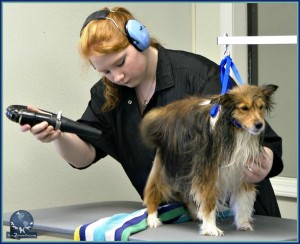 There are many variations to how this game gets played out to be effective. It is what makes a day interesting to a professional pet stylist. The better you get at this game, the faster you will be able to get through multiple pets without sacrificing quality. Think about what we do in the terms of food. An average home cook should be able to get 2-3 dishes on the table at the same time. A first-class home cook should be able to handle a meal with 4-5 dishes and at least 6 people. Seasoned home entertainers can handle an elaborate holiday meal for 20 with ease. A professional chef will master an entire shift serving over a 100 meals and all their side dishes with it all arriving to the table hot and beautifully prepared.
There are many variations to how this game gets played out to be effective. It is what makes a day interesting to a professional pet stylist. The better you get at this game, the faster you will be able to get through multiple pets without sacrificing quality. Think about what we do in the terms of food. An average home cook should be able to get 2-3 dishes on the table at the same time. A first-class home cook should be able to handle a meal with 4-5 dishes and at least 6 people. Seasoned home entertainers can handle an elaborate holiday meal for 20 with ease. A professional chef will master an entire shift serving over a 100 meals and all their side dishes with it all arriving to the table hot and beautifully prepared.
How far can you push yourself – before you get lost in the order of bathing pets? Test yourself and see how you do. It’s a fun game that can be challenging yet really invigorating. The more dogs, the more fun, and reward when it goes smoothly!
What are your best methods? Jump over to the Learn2GroomDogs Facebook page and tell us about it!
Happy Trimming!
~ Melissa
Help! I Have Too Many Clients!
 Did you know about half of all small businesses fail within the first four years? It’s a scary statistic, but fortunately, you’re not one of the fallen. Your books are full. You’re grooming steadily all day long. The phones are ringing off the hook – it’s a dream come true, right?
Did you know about half of all small businesses fail within the first four years? It’s a scary statistic, but fortunately, you’re not one of the fallen. Your books are full. You’re grooming steadily all day long. The phones are ringing off the hook – it’s a dream come true, right?
There can sometimes be a dark side to all of this success. Do you feel like no matter how hard you work, how efficiently you groom, you just can’t get ahead? Is your first available appointment still three weeks out – or more? Is your cancellation list getting longer and longer?
I’ll bet you’re tired.
Stressed.
Frustrated.
Wondering why you ever opened your own business.
After all, wasn’t it supposed to be fun and satisfying to finally be your own boss? Yet somehow, grooming all those cute little fluffy puppies has lost its appeal.
Sound familiar? I’ve been there more times than I care to admit!
What are you going to do?
The easy solution would be to hire another groomer. Unfortunately, finding someone talented, reliable, and a good fit for your team can be quite challenging. Most grooming schools have far more job requests than their graduates could fill. Placing an ad in any type of help wanted advertising outlet yields only crickets when it comes to finding anybody even remotely qualified to groom dogs and cats.
 This is an age-old problem. I don’t know of a single successful grooming business that has not faced this dilemma at some point.
This is an age-old problem. I don’t know of a single successful grooming business that has not faced this dilemma at some point.
Don’t fret. You have options. Some are more long-term solutions. Others can be implemented instantly for immediate relief.
- Train your own groomers and stylists from scratch.
- Delegate basic tasks.
- Hire an assistant.
- Become exclusive by raising your prices, which will instantly lighten your client load.
Training your own groomers and stylists from the ground up is a great long-term solution – and sometimes the only option. It’s not a quick fix, but it is something you will want to keep in the back of your mind for the future. If you opt to go this route, keep in mind it will typically take six months to a year to train to someone who can independently groom dogs.
If you are a salon owner, my guess is you wear many hats when it comes to running your business. What if you could have someone else do some of the NON-grooming related tasks? Hire someone full or part-time to do the tasks you really don’t need to be doing. Things like:
- cleaning
- laundry services
- running errands
- bookkeeping
- payroll
- data entry
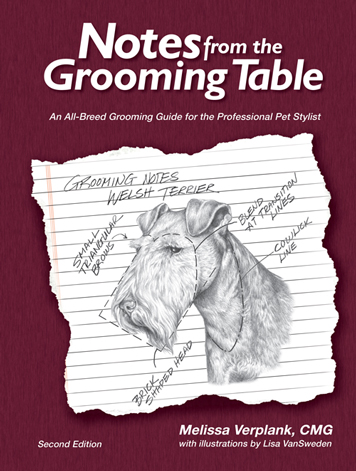 Delegate anything you can to assist with the smooth running of your business – or your home – which is not directly related to grooming.
Delegate anything you can to assist with the smooth running of your business – or your home – which is not directly related to grooming.
Training a grooming assistant is a great option. Having someone to help with the more elementary tasks of grooming pets isn’t as time-consuming or difficult as training a full-fledged groomer. Yet, a well-trained assistant can almost double your productivity. A large bulk of the time grooming dogs is eaten up in the wet room.
Yes, training an assistant takes time but you will make that time up quickly! It will go even faster if you utilize the Core Skills videos in the Learn2GroomDogs.com online library. Combine that with select sections from the first 80 pages of Notes From the Grooming Table – Second Edition, and you have a winning recipe for success. Let’s face it, half of the time spent grooming dogs is spent in the bathing, drying, and fluffing areas.
There are other benefits to having an assistant work with you. They can jump in to help with other simple tasks when you really need another set of hands. Wouldn’t it be great to have someone who could:
- help handle a challenging pet
- answer the phone
- run dogs and do potty breaks
- help with customers
- clean and sanitize
- do laundry
…the list could go on and on.
Many successful stylists just don’t want to deal with a staff. They want to keep it simple. Uncomplicated. Stress-free. Yet if you have way too many clients, the demands on your time and your sanity will be quickly tested.
 If the other three options are not good fits for you, maybe raising your prices and becoming exclusive is the best option. If you stop and do the math, it can be pretty enlightening. Raising your prices by $5 to $10 per dog will weed out your client load almost instantly, freeing up your time – and giving you time to breathe.
If the other three options are not good fits for you, maybe raising your prices and becoming exclusive is the best option. If you stop and do the math, it can be pretty enlightening. Raising your prices by $5 to $10 per dog will weed out your client load almost instantly, freeing up your time – and giving you time to breathe.
When you feel you could work twenty-four hours per day, seven days a week, and still not have sufficient time to get everything done – it’s time for a change. Situations like this are what contribute to safety issues, affect your personal life – maybe even your health.
Success is a great thing as long as you manage the growing pains of your business. If you don’t, the business is going to be running you instead of you running your company.
If you are one of the success stories with an abundance of pooches (or felines) coming through your doors, congratulations! Remember – managing growth is just as important as creating an amazing service for your customers. If you are feeling frustrated and stressed out, make the change you feel best fits your situation. Get off that work overload treadmill. Once you do, you might even enjoy your business again!
Has this ever happened to you? What did you do? Jump over to the Learn2GroomDogs Facebook page and tell us about it!
Happy Trimming!
~ Melissa


